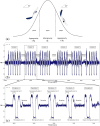Hydrogel mechanical properties in altered gravity
- PMID: 39117674
- PMCID: PMC11310329
- DOI: 10.1038/s41526-024-00388-2
Hydrogel mechanical properties in altered gravity
Erratum in
-
Author Correction: Hydrogel mechanical properties in altered gravity.NPJ Microgravity. 2024 Aug 21;10(1):87. doi: 10.1038/s41526-024-00426-z. NPJ Microgravity. 2024. PMID: 39164262 Free PMC article. No abstract available.
Abstract
Exposure to altered gravity influences cellular behaviour in cell cultures. Hydrogels are amongst the most common materials used to produce tissue-engineering scaffolds, and their mechanical properties play a crucial role in cell-matrix interaction. However, little is known about the influence of altered gravity on hydrogel properties. Here we study the mechanical properties of Poly (ethylene glycol) diacrylate (PEGDA) and PEGDA incorporated with graphene oxide (GO) by performing tensile tests in micro and hypergravity during a Parabolic flight campaign, and by comparing them to the same tests performed in Earth gravity. We show that gravity levels do not result in a statistically significant difference in Young's modulus.
© 2024. The Author(s).
Conflict of interest statement
The authors declare no competing interests.
Figures





References
LinkOut - more resources
Full Text Sources

